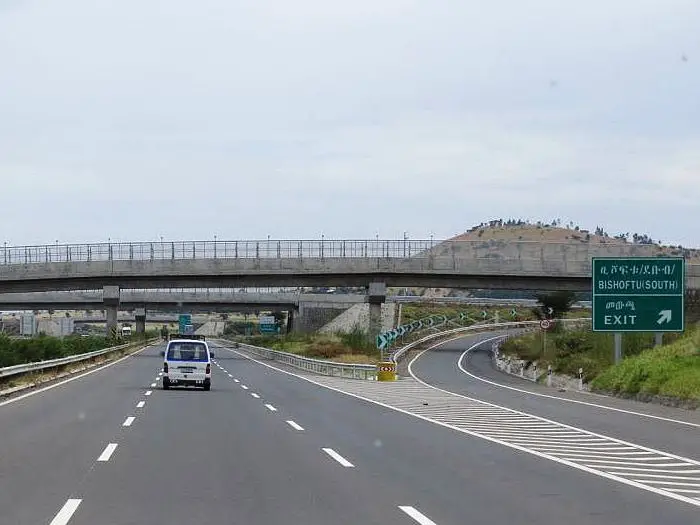The First expressway in Ethiopia has been of great help in the country after years of enormous traffic jams especially along the Addis Ababa-Adama road.
Things have changed with the new Addis Ababa Adama (Nazareth) Expressway; the first expressway in Ethiopia and East Africa and the first toll road in the nation. The 84.7 Kilometers stretching from Addis Ababa City to Adama (commonly known as Nazareth, a throbbing economic hub in the country) opened to traffic on the 14th September 2014 in the presence of Muktar Kedir the President of the Oromia Regional State and Workneh Gabeyehu the Minister for Transport.
This was a project by the Ethiopian Road Authority (ERA) in conjunction with the Chinese Communications Construction Company (CCCC) as the contractor, which begun on the 21st of April, 2010 at a cost of $612million. The road has a capacity of 15,000 vehicles per day and will tremendously help the country achieve milestones in development and above that, provide job opportunities.
The whole idea of the road was to ease congestion on this route, consequently saving on fuel as the country battles to achieve its developmental targets. The road plays a major role in development of the country because it is a segment of the Addis Ababa Djibouti Highway, Djibouti being the country’s hub for business, import and export activities.
This is a sustainable project for the country that will greatly reduce wastages of both time and other resources. Compared to the older route, the Addis Ababa Adama Expressway is 20Kilometers shorter. The road is designed to accommodate speeds of between 100kmph and 120kmph on different sections. These aspects have reduced the travel times to around 40 minutes from the average 2 hours on the older route.
Design of the Expressway
The expressway has 18 Km of link road and 7.2 Km of frontage road on wither sides in Adama. The road has six interchanges, three intersections, seventy seven slab culverts, thirty six underpasses and forty three overpasses. The 5.4 M high overpasses are supported by 73t girders, reinforced concrete pairs and stone structures. Pedestrians, agricultural vehicles and cars can use three of the underpasses. The underpass for agricultural vehicles has a height of 3.2m and width of 4.5m. The car underpasses are larger in size with 6.5 m width and 4.5m height and lastly the pedestrians underpasses are 4.5 m wide and 2.2.m high. The road has two main toll gates and 13 ramp toll gates. The six lane expressway has seven toll stations to collect money from the drivers, 48 gates on the toll road and three checkpoints to prevent cargo overloading on freight vehicles. Eight large bridges and 77 smaller ones are also part of the project. The road is also fenced on both sides for the protection of people and animals.
Use of Technology in Managing Tolling on the Expressway
Not only is this road phenomenal in the country, but the level of advanced technology used is quite commendable. The road network, with its overpasses, underpasses and interchanges, definitely needs sophisticated technologies. In this case, there are Traffic management centers and Intelligent Transportations Systems (ITS) on the road for effective operation. The ITS facilities such the traffic cameras and variable message signs (VMS) all powered using solar panels distributed along the whole stretch of the road, will not only help in effective traffic management and incident management control along the with safe operations on the new complex road, but also help the country take massive leaps in embracing clean energy. It is fascinating how the country has embraced sustainable solutions for energy sources like solar panels to power the surveillance cameras and lighting of the Expressway. These medleys of innovations are massive leaps in achieving clean energy solutions in the country.


The Addis Ababa Adama (Nazareth) Expressway could be the first one in Ethiopia but not in East Africa since there already exists one the 50km Thika Super Highway in Kenya.